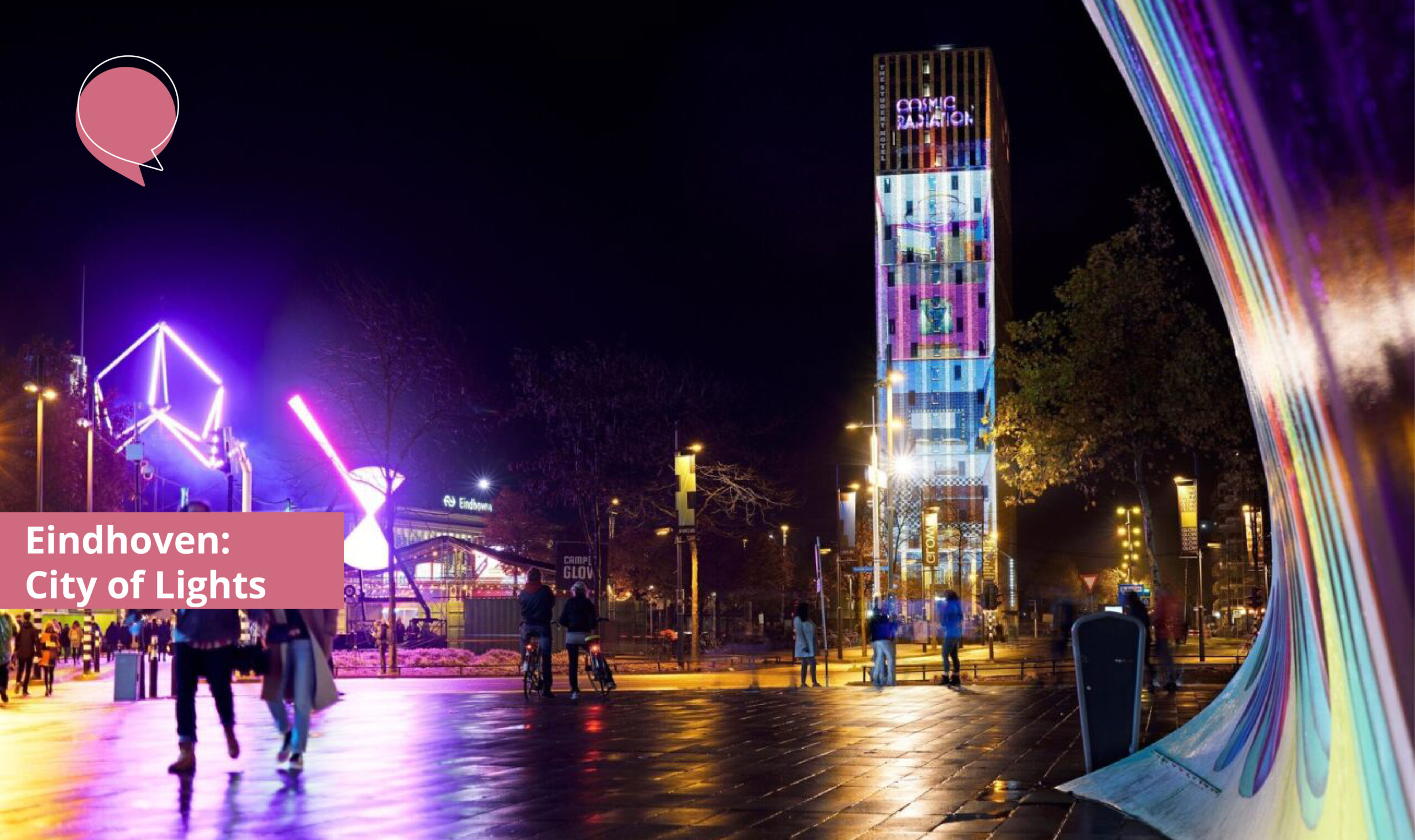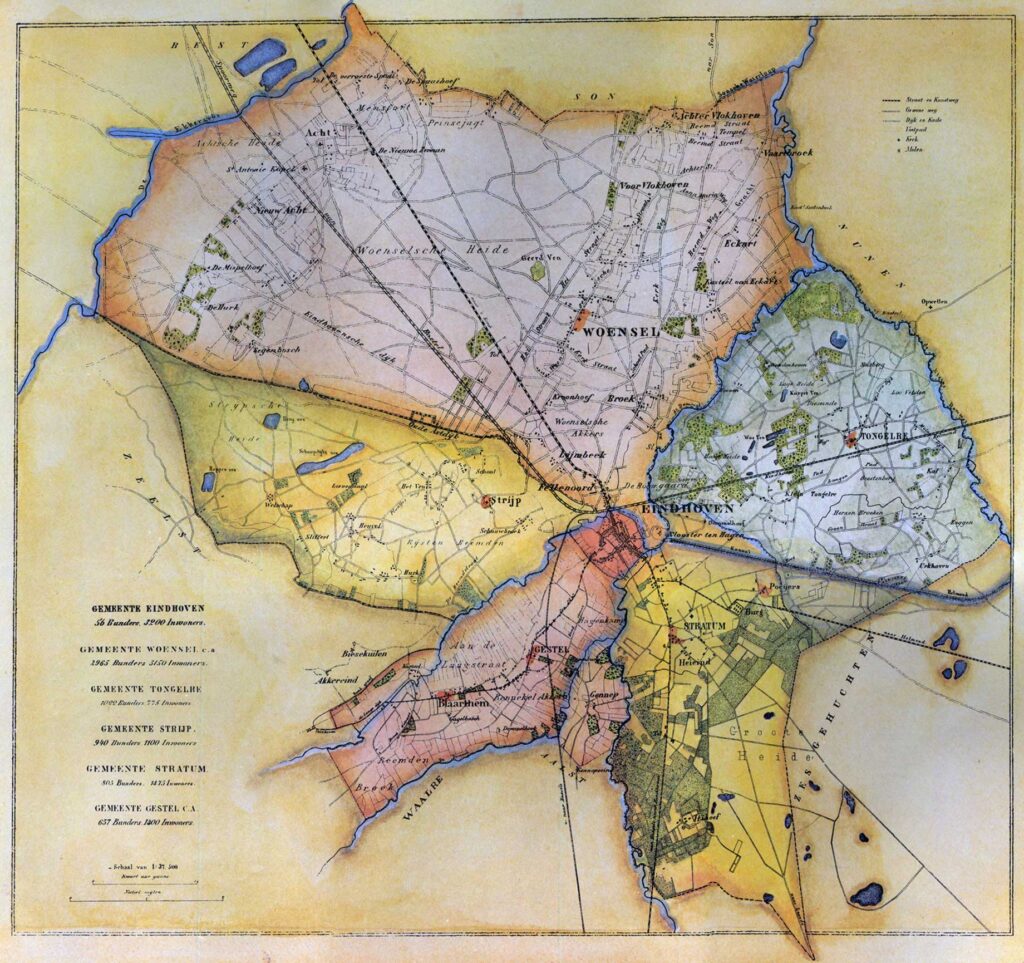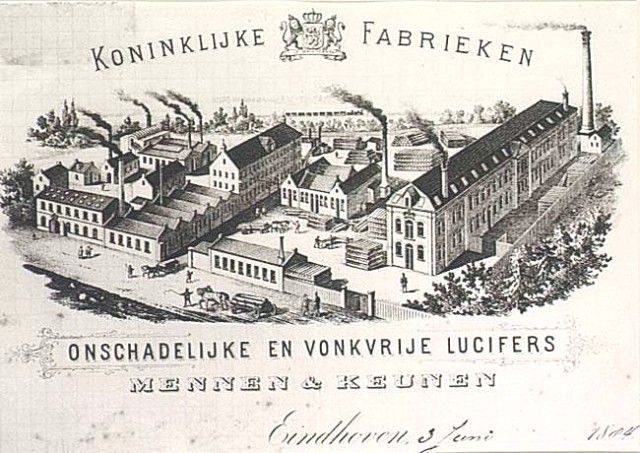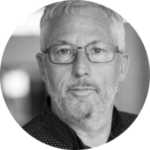
November 2023 | Written by – Willem Van Hoorn
Eindhoven: Its history as the ‘City of Light’
Chances are that you have recently seen announcements for the so-called ‘Glow Festival´. The upcoming edition of this Eindhoven festival will take place from November 11 – 18. In case you haven’t heard of it before, Glow is an annual festival, during which the city of Eindhoven proposes a particular theme to artists from all over the world and invites them to ‘do something with light’ around that theme. Glow has been taking place since 2006 and is approaching its 18th edition. The leading theme this year is ‘The Beat’.

Old map of Eindhoven (small in the center) and the areas of the then still autonomous villages surrounding it.
The combination of Eindhoven on the one hand, and ‘Light’ on the other is definitely no coincidence. Eindhoven has in common with the French capital Paris that they are both called ‘the city of light’. So, on the occasion of Glow, let me shine a little light on Eindhoven and on its history as a city of light.
If you go back just a little over a hundred years in time, what we now know as ‘Eindhoven’ consisted of 5 villages plus the small city of Eindhoven in the midst of them. The area around Eindhoven was still largely agricultural land. Little farms, sometimes barely making a living. Such industrial activities as there were at the time centered around tobacco (cigars) and textiles.
The province of North Brabant was a Roman Catholic part of the country, and that came with comparatively large families. Of old all farmers’ sons and daughters were needed to keep the little farms going, but when the mechanization of agriculture started that was no longer the case. The result: high unemployment, meaning: cheap labor. And that made this area favorable for these sorts of industries. Cigar making, for instance, was all manual labor, back then, so very labor intensive.
It was the foundation of the light bulb factory of Philips (initially manual labor!), followed by its rapid expansion into what we now know as Philips Industries, together with the coming and rising of DAF Trucks that spurred an enormous growth of the population. Since the locally available workforce soon could not deliver all the hands that were needed, the companies started attracting thousands of workers from further away. Those workers needed to live somewhere, with a massive building of houses as a result.
As the City of Eindhoven was still confined to its medieval limits at the time, these developments called for radical changes in administration. In 1920, the five villages of Woensel, Tongelre, Stratum, Gestel & Blaarthem, and Strijp were incorporated into the new Groot-Eindhoven (“Greater Eindhoven”) municipality. The prefix “Groot-” was soon dropped.
After the incorporation of 1920, the five former municipalities became districts of the municipality of Eindhoven, with Eindhoven-Centrum (the City proper) forming the sixth. Right after the incorporation the number of inhabitants was just under 48.000, compared to around 240.000 now. Roughly a five-fold growth in one hundred years.

Postcard from 1884, showing the Royal Match Factory of Mennen and Keunen, originally located in the Bergstraat, Eindhoven center.
City of Light
Obviously, the factory of the brothers Anton and Gerard Philips was more than happy to advertise the title ‘City of Light’ for Eindhoven, the home base of their rapidly expanding light bulb factory. But the title is actually older than the time of Philips Industries. From the second half of the 19th century onwards, Eindhoven had a thriving match-making industry.
The match factories found a favorable environment here, due to a combination of the existing cigar-making industry and the presence of a lot of trees nearby that offered the right sort of wood for matches. And it was the match industry that had already delivered to Eindhoven the honorary title of ‘City of Light’.
Eindhoven has not only grown rapidly in the number of inhabitants. It has also grown ever stronger into its current role as the beating heart of the Brainport region. Its relatively small size notwithstanding, it has become one of the world’s leading capitals of technology, innovation, and design.
During the eight evenings of the Glow festival, the Eindhoven city center is almost completely closed to traffic. And rightfully so: more than 800.000 visitors yearly take the Glow tour. And I highly recommend you to be one of those taking the tour, at least once. If you do, you’ll have the opportunity to wholly submerge into the true city of light. Enjoy!

Glow festival 2023: [Left image ] Evolution of Life Installation, opens a passageway to a serene haven, invoking mindfulness and feelings of joy. Immersive nature-themed visualizations and soundscapes blend in with the cityscape of Eindhoven. [Right Image] Station Square Installation, a search for the balance between people and technology.
The website of the Glow Festival 2023 can be found here. If you want to delve deeper into the history of Eindhoven, you can start with the Wikipedia page of the city. If that info tastes like ‘more’, the Historical Atlas of Eindhoven will make an excellent follow-up. I’m sure it can be bought online, but let me make a case here for the local bookstores in town.

Willem van Hoorn
He worked as a Policy Advisor Internationalization at Eindhoven University of Technology. He has led several projects and initiatives in the Brainport region to achieve integration and internationalization. When he’s not reading or writing, Willem is often brainstorming for innovative ideas, connecting with others, or bicycling towards the coast.
He is an exceptional Dutch Culture Expert and Storyteller!
